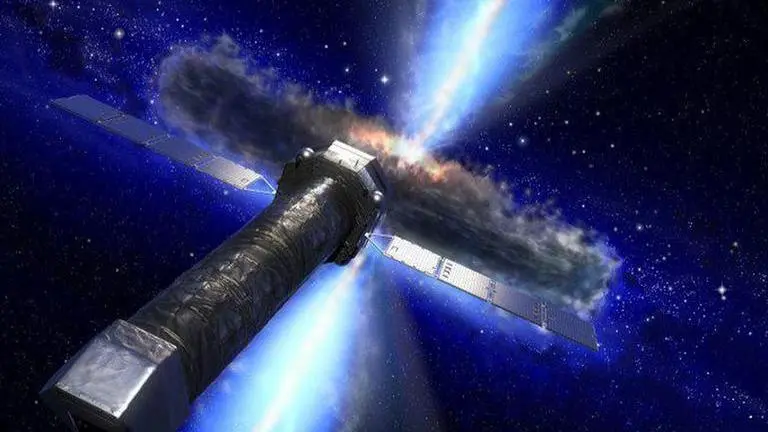Updated 3 May 2022 at 17:00 IST
ESA introduces future largest X-ray observatory Athena to study lakhs of black holes
ESA's Athena mission is scheduled to launch no earlier than 2035 and would make revolutionary discoveries about exoplanets, neutron stars, and black holes.
- Science News
- 3 min read

Black holes have been a matter of curiosity ever since Albert Einstein predicted them through his theory of relativity in 1915. Fast forward to 2022, we have the first direct image of a supermassive black hole but the mysteries around these behemoths still have the scientists wondering. In order to answer some more questions about black holes and other objects, the European Space Agency (ESA) is working on its new mission- Advanced Telescope for High-ENergy Astrophysics or Athena.
Athena would basically be a space telescope under planning and according to the ESA, Athena would be the world's largest X-ray telescope after it launches in the mid-2030s. What's more, is that this telescope would collaborate with LISA (Laser Interferometer Space Antenna), another ESA mission to observe lakhs and lakhs of black holes.
Meet #Athena – destined to be the world's largest X-ray observatory. Due to launch in mid-2030s to investigate the hot & energetic Universe⚡️
— ESA Science (@esascience) May 3, 2022
Athena will observe 100s of 1000s of #BlackHoles⚫️ incl. many formed when the Universe was young👉 https://t.co/aYcraXffn8#BlackHoleWeek pic.twitter.com/4mTCVTEM97
Know more about the potential revolutionary telescope
With plans to deploy it at the first Lagrange point, the telescope is currently under the study phase and engineers are yet to begin its construction. ESA says that the construction would begin once the mission design and costing have been completed and proposed for adoption in June 2023. Set to launch no earlier than 2035, the mission objective of Athena would be to find out how and why ordinary matter assembles to form galaxies and galaxy clusters. In addition to this, the telescope would also help scientists determine the growth of black holes and their impact on their surroundings.
(Image: ESA)
Advertisement
It is this reason why the telescope is being designed as an X-ray observatory. Scientists say that in order to complete the aforementioned objectives, it is important to map hot gas in the Universe. And to do that, the telescope needs to observe gas at millions of degrees in temperature along with certain high-energy particles travelling at near-light speed. "This requires space-based observations in the X-ray portion of the electromagnetic spectrum – which Athena will provide", ESA said in a statement.
As for the components of the telescope, it would consist of an X-ray telescope with a focal length of 12 metres, and the largest collecting area ever studied. Besides, Athena would carry two instruments- an X-ray Integral Field Unit (X-IFU) and a Wide Field Imager (WFI). While the first is for high-spectral resolution imaging, the second would be used for high count rate, moderate-resolution spectroscopy over a large field of view.
Advertisement
Likely to last for a minimum of four years with few potential extensions, the telescope, ESA says, might have a revolutionary impact on discoveries regarding objects such as exoplanets, neutron stars, black holes, supernova explosions and active stars.
Published By : Harsh Vardhan
Published On: 3 May 2022 at 17:00 IST

